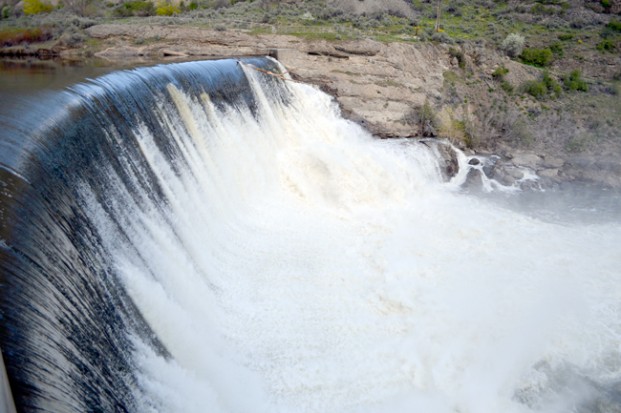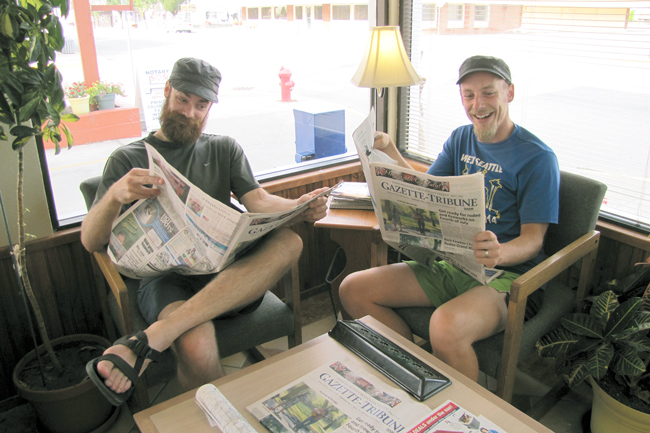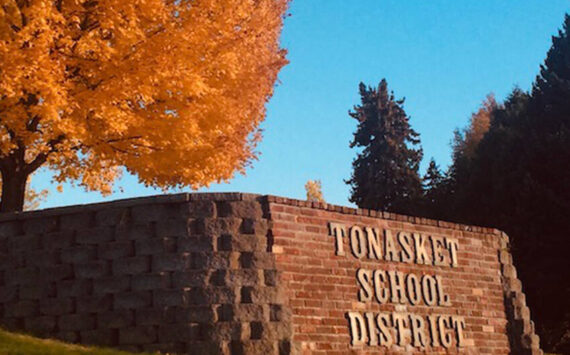
NOAA won’t serve as lead agency on removal; PUD seeks another electrification option
At the PUD regular commission meeting Monday, July 13, Commissioner Scott Vejraska reported on a June 30 meeting he had with the National Oceanic and Atmospheric Administration (NOAA) to discuss the possibility of NOAA playing the role of lead agency in the potential decommissioning and removal of Enloe Dam.
Vejraska said that because the organization could not and would not take over liability of the dam, the negotiations were at a standstill.
“If they aren’t going to take 100% of the responsibility, it doesn’t work for us,” said Vejraska. “They want to be more of a quarterback and organize the way things are going to go, but not take on the role of a leader.”
Dale Bambrick, the NOAA Branch Chief of the Interior Columbia Basin Office who met with Vejraska, stated in a letter dated July 10 “The most challenging issue identified in the removal option had to do with the lead agency role that NOAA could assume versus the role the PUD is hoping that a lead agency can provide. Unfortunately, despite the PUD’s requests, NOAA would not be able to reimburse the $13 million in costs incurred on the dam. NOAA also would not be able to assume liability for the dam, nor would our lead agency be able to take ownership of the dam or its license.”
“The expectations for a lead agency are what we have had all along. The money wasn’t the deal killer,” Vejraska said. “They said they had funding to help remove it from different organizations, but they wouldn’t tell us who; they just said it was an offshore account. We spent the better half of two hours trying to work something out.”
Bambrick said NOAAs role as lead agency would involve technical support, coordination of efforts among agencies and stakeholders, and potentially helping to initiate a sediment study to determine potential contamination behind the dam.
“If in the future the PUD decides against the hydroelectric option or chooses to reduce any of its requirements for lead agency reimbursement or liability, we hope you would contact us to discuss the options further,” stated Bambrick, adding “dam removal would result in substantial benefits to NOAA trust fish species. We remain serious about the consideration of the lead agency role as we have defined it.”
Vejraska concluded his report by saying, “This doesn’t mean we are not moving forward one way or another. Wednesday (July 15) an outfit is coming in from Colorado who is interested in buying the dam to generate power. That’s where we stand.”
Vejraska’s report was followed by nearly two hours of public comment. No one in the audience spoke in favor of electrification. The most common query was why the PUD would not allow for a sediment study to be performed.
Commissioner Steve Houston said the PUD was still waiting to hear from the Bureau of Land Management (BLM) about the status of the lease, as the dam sits on BLM land. Linda Coates-Markle, BLM Manager from the Wenatchee Field Office said in February she was attempting to find the original lease, which predated the existence of BLM land.
“The lease should state whether the dam must be removed, and clarify what PUD can demand a lead agency to do,” said Commissioner Ernie Bolz.
“It seems like this would be one of the very first things you would want to find out before going ahead with the projects and all the debts,” said Jim Miller of Omak.
Bolz said, “In terms of process we have done what is required by the law of the land.”
“Clearly getting the original document is something we have to do right away,” said Houston.
Joseph Enzensperger of Oroville said when he was setting up the No on Enloe committee of volunteers, he asked about the original document and was told by PUD General Counsel Mick Howe that Clark and Associates had a document issuing their opinion. However, Enzensperger was told he could not see the document due to client-lawyer privileges. “So the Clark opinion seems to be the legal document here,” Enzensperger said. “The PUD sets up all these obstacles to agencies that want to take the lead. The liability is on us as a utility. The only way to get away from the liability is to move quickly to get rid of Enloe; then you would be rid of the liability. You can’t block sediment studies and expect anyone to take the lead on this.”
Mark Kubiak, who said he has lived in the county as a businessman the last 16 years, also urged the commissioners to get rid of the dam.
“Walk away as quickly as you can from this. The county can’t afford it and the ratepayers can’t afford it,” said Kubiak. “The climate has become erratic, and it’s not dependable. We may be looking at the new normal with a drier, hotter climate.”
Chris Fisher of Riverside, a Fish and Wildlife Biologist with the Colville Tribes, addressed the PUDs concern of ratepayers being potentially stuck with the liability of removal of the dam.
“There is a lot of funding for salmon recovery,” said Fisher. “There is ample funding for a project this size; the money is there and the project has a lot of upside for an agency like NOAA. My opinion is there is not a risk to the ratepayers; there’s a lot of money there.”
Commissioner Houston said he was concerned if an agency got involved, and found out the sediment is a big risk, they could walk away from the project.
“Another dimension is all the players on the First Nation side are not convinced fish should go over that spot, and that’s not a battle the PUD should fight,” said Bolz.
Elected Chief Keith Crow of the Lower Similkameen Indian Band traveled from Keremeos, B.C. to attend the meeting along with Rob Edward, a Chopaka resident and member of the Lower Similkameen Band. They both stated they opposed electrification of the dam.
Edward spoke of concerns about having Chinook Salmon in the upper Similkameen due to tribal legend, as well as preservation of their cultural sites.
“It is important for people on both sides of the border to have cultural sites left in tact,” Edward said. “It seems like you are shooting dice. You don’t know what is in there, but you want someone to take on the responsibility.”
Chief Crow said the Lower Similkameen Band were committed to the removal of the dam, and supported the Colville Confederated Tribe in a Band Council Resolution. “So it is a legal document that stands until rescinded,” Crow said. In addressing the PUD commissioners, Crow said he agreed with members of the audience.
“We don’t see why you won’t fund the studies for the sediment. Everyone in this room seems to be saying, ‘Why wouldn’t you do the testing?’ Maybe you need to go after the proponents and try to grab some of the money to do these studies,” said Crow.
Bolz said he was concerned if the study was done, “and we find out it is hot, the people in this room opposing the dam will have us in legal battles that the ratepayers will have to pay for.”
Fisher said a proposal submitted to do a more robust sample of the sediment had secured funding and could have had the study done within the year.
“My understanding is PUD was not supportive of the study because it might uncover something,” said Fisher.
Bolz replied, “It’s not the sampling that worries us, it’s what will be done to us.”
“If you found something that pushes a lead agency away from you, you are not losing anything because you don’t have a lead agency now anyway,” said Fisher, “and if you found out there was nothing there, you would have a lead agency.”
Jere Gillespie of Chesaw pointed out that the PUD would not be the potentially liable party for the sediments, as they did not put them there. She said if a lead agency were in place, the legal steps would include a search for the responsible party, and if they were no longer around, by law the responsibility would go to the U.S. government’s general tax fund.
“But if there were an act of God such as an earthquake, and the sediments go down the river, then you are responsible,” Gillespie said.
Vejraska pointed out that despite July 1 being a deadline for the PUD to move forward with electrification, “We are still looking at options here. We are looking at the economics of this thing and trying to find the best outcome.”





